《THE POLITICS OF UNITED STATES FOREIGN POLICY SECOND EDITION》
| 作者 | JEREL A.ROSATI 编者 |
|---|---|
| 出版 | 未查询到或未知 |
| 参考页数 | |
| 出版时间 | 没有确切时间的资料 目录预览 |
| ISBN号 | 无 — 求助条款 |
| PDF编号 | 820553778(仅供预览,未存储实际文件) |
| 求助格式 | 扫描PDF(若分多册发行,每次仅能受理1册) |
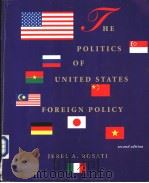
PART IINTRODUCTION*1+CHAPTER 1 THE POLITICS OF U.S. FOREIGN POLICY3
Understanding Foreign Policy, Complexity, and Politics*3+++The Study of U.S. Foreign Policy5
The Analytical Framework6
The Three Perspectives7
The Three Themes9
Politics into the Twenty-first Century10
PART II HISTORICAL AND GLOBAL CONTEXT13
CHAPTER 2HISTORY OF UNITED STATES FOREIGN RELATIONS15
Major Historical Patterns15
The Myth of Isolationism16
European and English Colonial Roots16
The Continental Era19
The Regional Era24
The Global Era27
World War II and Immediate Postwar Foreign Policy27
The Cold War Era28
The Post-Vietnam War Era31
The Post-Cold War Era?36
Into the Twenty-first Century37
CHAPTER 3THE GLOBAL CONTEXT AND AMERICAN POWER43
Influence on Government and Society43
The Cold War Era in World Politics43
The Rise of the East-West Conflict45
The Rise of American Power46
The Rise of Greater Global Complexity49
The Rise of Global Pluralism and Interdependence49
The Relative Decline of American Power51
The Post-Cold War Era in World Politics57
PART III THE GOVERNMENT AND THE POLICYMAKING PROCESS65
CHAPTER 4THE PARADOX OF PRESIDENTIAL POWER67
The Elements of Presidential Power67
Constitutional Roles and Strengths68
Limits and Constraints70
Uncertain Elements76
The Paradox of Presidential Power77
The Problem of Presidential Governance79
The Presidential Life Cycle79
American Politics and the Crisis of Governance83
Presidential Power and the Conduct of Foreign Policy83
Some Historical Context84
Presidential Supremacy During the Cold War Years84
The Decline of Presidential Power Since Vietnam and the End of the Cold War85
Governance Problems in the Post-Vietnam War Era86
Post-Cold War Opportunities and Risks92
Summary93
CHAPTER 5PRESIDENTIAL LEADERSHIP97
The 'Power to Persuade and Act97
Patterns in Presidential Leadership and Governance100
The Roosevelt Presidency100
The Cold War Years100
The-Transition Years101
The Post-Vietnam War Years101
The Post-Cold War Years103
The ChallengeS of the Post-Cold War World107
CHAPTER 6PRESIDENTIAL MANAGEMENT AND THE NSC111
Presidential Management114
The President's Orientation, Agenda, and Level of Involvement114
Appointment of Staff and Advisers115
Organizing the Policym. aking Process122
The National Security Council124
Presidential Management Styles and the Role of the NSC127
The Early NSC as Advisory Body127
The Rise of the NSC Adviser and Staff128
The NSC Adviser and StaffAscendant131
Clinton's Management Style and NSC141
The NSC Process in Perspective143
CHAPTER 7THE STATE DEPARTMENT AT HOME AND ABROAD149
The Context Behind the Decline of State's Historic Role150
State's Functions Over Time151
Bureaucratic Organization and Structure153
At Home154
Abroad156
Bureaucratic Patterns158
The Foreign Service Subculture160
Consequences for Presidential Reliance on State166
The Future?167
CHAPTER 8THE MILITARY ESTABLISHMENT173
Historical Trends173
The Old U.S. Military173
The Modem Military Establishment174
DOD's Bureaucratic Structure and Process179
The Formal Ideal179
The Political Reality180
The Military Subculture185
Patterns in DOD's Military Behavior188
The American Way of War: Military Strategy and Performance201
Reform and the Future of the Military207
CHAPTER 9THE INTELLIGENCE COMMUNITY213
Purpose and Activities of Intelligence213
The Major Intelligence Organizations214
Patterns in the Intelligence Process217
Coordination Problems220
Producer-Consumer Problems221
Variation in Intelligence Success222
The Central Intelligence Agency224
Evolution of the CIA and Covert Operations226
The "Good Ole" Days226
The "Fall" and Reform231
The Resurgence233
The Tensions Between National Security and Democracy238
A Post-Cold War Era of Uncertainty?244
CHAPTER 10 FOREIGN ECONOMICS AND THE REST OF THE BUREAUCRACY253
The Foreign Economic Bureaucracy253
U.S. Foreign Economic Policy in Historical Context253
Contemporary U.S. Global Economic Involvement and Interdependence254
Relevant Governmental Institutions256
Coordination Problems'from Above261
The National Economic Council265
The Cultural and Communications Bureaucracy267
Other Elements of the Foreign Policy Bureaucracy269
Major Foreign Policy Patterns Revisited273
CHAPTER 11 DECISION-MAKING THEORY AND EXECUTrW BRANCH POLICYMAKING277
Policymaking Stages278
Decision-Making Models278
The Rational'Actor Ideal278
Groupthink280
Governmental Politics282
Organizational Process284
Policymaking Patterns289
Presidential and Bureaucratic Politics289
Policymaking Tendencies291
The Complex Reality of Policymaking298
CHAPTER 12 CONGRESS AND LEGISLATIVE-EXECUTIVE RELATIONS303
The History of Legislative-Executive Relations303
The Constitution and Foreign Policy304
An Overview of Legislative-Executive Relations306
World War II and the Postwar Years307
Presidential Preeminence in the Cold War Era307
Congressional'Reassertion in the Post-Vietnam War Era314
Contemporary Institutional Changes316
Contemporary Legislative-Executive Relations321
Advice and Consent331
The Power of the Purse and to Make Laws334
The Power of Oversight and Investigations336
Prospects344
CHAPTER 13 THE REST OF GOVERNMENT351
The Judiciary351
Historical Overview351
The Contemporary Era353
State and Local Governments359
The Washington Political Community367
Government Politics in Perspective371
PART IV THE SOCIETY AND DOMESTIC POLITICS375
CHAPTER 14 THE PUBLIC AND THEIR BELIEFS377
The Traditional Wisdom377
A More Complex and Consequential Public378
Public Opinion379
Elite and Mass Publics379
Major Patterns in Public Opinion381
Consequences for Domestic Politics and Policymaking384
Political Ideology and Foreign Policy Orientations389
The Cold War Years of Consensus391
The Post-Vietnam Years and Lack of Consensus398
The Search for Consensus and Policy Legitimation405
Political Culture407
American Culture and National Style407
Foreign Policy Implications409
Continuity, Change, and the Vietnam War412
Patterns in Beliefs and Making Foreign Policy414
CHAPTER 15 POLITICAL PARTICIPATION AND ELECTORAL POLITICS423
Political Participation423
The Electoral Process*424+++Electoral Patterns Over Time426
The New Deal Realignment426
The Period of Bipartisanship427
The Post-Vietnam Dealignment Era431
Contemporary Electoral and Campaign Politics435
CHAPTER 16 GROUP POLITICS445
Group Origins and Development445
Group Politics During the Cold War Era448
Foreign Policy and Cold War-Oriented Groups449
The Military-Industrial-Scientific Infrastructure453
The Foreign Policymaking Establishment456
The Post-Vietnam War and Post-Cold War Eras460
The Civil Rights and Anti-War Movements460
The Resurgence of Conservative Movements and the Right462
Consequences for Group Politics465
Group Politics Toward the Future478
CHAPTER 17 NATIONAL SECURITY, CML RIGHTS, AND CML LIBERTIES487
Historical Developments487
The Preoccupation with National Security versus Democratic Liberties489
World War I490
World War II491
The Cold War492
The Post-Vietnam Resurgence of Civil Liberties498
The Post-Cold War Future500
CHAPTER 18 THE MEDIA AND THE COMMUNICATIONS PROCESS505
The Influence of the Mass Media and the News505
Contemporary News Media Coverage506
Influences on the News Media508
The Complexity and Ambiguity of the World508
Characteristics of the News Business509
The Political Environment and the Communications Process514
Implications for the Politics of U.S. Foreign Policy522
The Media and U.S. Foreign Policy Since World War II523
Public Knowledge and Democratic Citizenship531
The Prevalence of Symbolic Politics534
The Entertainment Media536
The Alternative Media540
The Specialized Foreign Policy Media543
Information, Ideas, Symbols, and Politics546
PART VCONCLUSION553
CHAPTER 19 STATE-SOCiETY RELATIONS, MAKING FOREIGN POLICY, AND FOREIGN POLICY CHANGE555
Competing Theoretical Models556
Pluralism556
Elitism556
The Great Debate558
Hyperpluralism559
The Making of Foreign Policy Since World War II560
Pluralism and the Cold War Years561
The Post-Vietnam War Era, from Elitism to Pluralism562
Continuity in Hyperpluralist Politics and an Apolitical Mass Public565
Foreign Policy Change570
CHAPTER 20 INTO THE TWENTY-FIRST CENTURY577
The Collapse of the Cold War Abroad and at Home578
The Continuation of American Power, Involvement, and Interests580
The Future Politics of U.S. Foreign Policy582
Author Index585
Subject Index599
《THE POLITICS OF UNITED STATES FOREIGN POLICY SECOND EDITION》由于是年代较久的资料都绝版了,几乎不可能购买到实物。如果大家为了学习确实需要,可向博主求助其电子版PDF文件。对合法合规的求助,我会当即受理并将下载地址发送给你。
高度相关资料
-
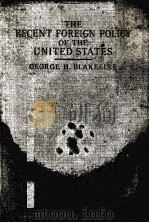
- THE RECENT FOREIGN POLICY OF THE UNITED STATES
- 1925 THE ABINGDON PRESS
-

- FRESH-WATER INVERTEBRATES OF THE UNITED STATES SECOND EDITION
- A WILEY-INTERSCIENCE PUBLICATION
-
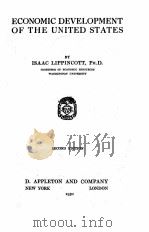
- ECONOMIC DEVELOPMENT OF THE UNITED STATES SECOND EDITION
- 1930 D. APPLETON AND COMPANY
-

- Western Hemisphere Immigration and United States Foreign Policy
- 1992 The Pennsylvania State University Press
-

- THE POLITICS UNITED STATES FOREIGN AID VOLUME 7
- 1987 CROOM HELM
-

- POLICY AND POLITICS IN THE UNITED STATES THE LIMITS OF LOCALISM
- 1987 TEMPLE UNIVERSITY PRESS
-

- FOREIGN AFFAIRS AND THE UNITED STATES CONSTITUTION SECOND EDITION
- 1996 CLARENDON PRESS . OXFORD
-

- The Politics of United States foreign policy
- 1993 HARCOURT BRACE JOVANOVICH COLLEGE PUBLISHERS
-
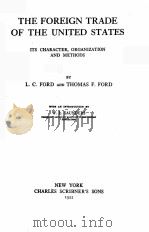
- THE FOREIGN TRADE OF THE UNITED STATES
- 1922 CHARLES SCRIBNER’S SONS
-
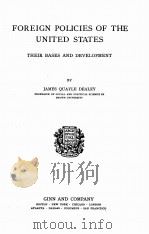
- FOREIGN POLICIES OF THE UNITED STATES
- 1926 GINN AND COMPANY
-
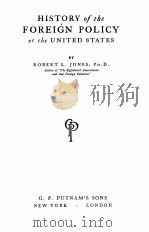
- HISTORY OF THE FOREIGN POLICY OF THE UNITED STATES
- 1933 G.P. PUTNAM’S SONS
-
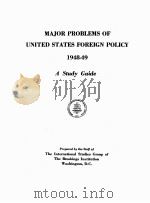
- MAJOR PROBLEMS OF UNITED STATES FOREIGN POLICY 1948-1949
- 1948 THE BROOKINGS INSTITUTION WASHINGTON
-
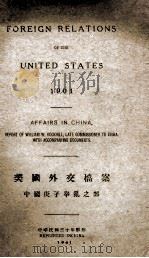
- FOREIGN RELATIONS OF THE UNITED STATES 1901
- 1941 REPRINTED IN CHINA
提示:百度云已更名为百度网盘(百度盘),天翼云盘、微盘下载地址……暂未提供。➥ PDF文字可复制化或转WORD

